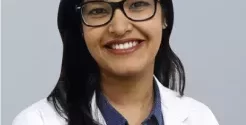High blood pressure, often termed hypertension, has earned its moniker as the silent killer for a compelling reason: it can lurk within the body unnoticed for extended periods, yet it holds the potential to be deadly. Unlike many health conditions, hypertension rarely presents symptoms, making regular testing imperative for diagnosis. Unbeknownst to many, this seemingly silent ailment can precipitate severe consequences, including heart attacks, sudden cardiac deaths, strokes, kidney failures, and even blindness. The insidious nature of hypertension underscores the critical importance of early detection and proactive management.
Symptoms of hypertension, if they manifest at all, tend to be subtle, if not entirely absent. While very high blood pressure levels may elicit symptoms such as headaches, blurred vision, chest pain, and nosebleeds, most individuals with hypertension experience no overt signs. However, recurrent headaches, particularly those occurring in the early morning or concentrated in the lower rear side of the head, should prompt consideration of blood pressure monitoring. Additional symptoms, such as chest tightness, dizziness, imbalance while walking, breathlessness, and fatigue, warrant medical evaluation, as they could indicate underlying hypertension.
Fatigue, though nonspecific, may also raise suspicion of hypertension, particularly when accompanied by other symptoms. Shortness of breath, while uncommon in hypertension, may emerge as a consequence of complications like heart failure or heart attack. Hypertension can further manifest as dimness of vision or permanent loss of vision, primarily attributable to blood vessel abnormalities affecting ocular tissues. Chest pain, attributable to a mismatch in oxygen demand and supply or vessel blockages, serves as a common symptom of hypertension, potentially culminating in conditions like angina.
Understanding hypertension extends beyond recognizing its symptoms to identifying its risk factors and preventive measures. As an asymptomatic condition, periodic checkups emerge as the primary means of diagnosis. Strong familial predisposition, compounded by lifestyle factors like poor diet, sedentary habits, excess weight, stress, smoking, and excessive caffeine or alcohol consumption, heightens susceptibility to hypertension. Urban populations, particularly young professionals with demanding jobs and erratic lifestyles, are particularly at risk.
Preventing hypertension demands a multifaceted approach. Adopting a diet rich in fruits and vegetables while limiting salt and processed foods, engaging in regular exercise, maintaining a healthy weight, and managing stress can mitigate the risk. Lifestyle modifications, coupled with periodic blood pressure monitoring, serve as potent tools in the fight against hypertension. Understanding ideal blood pressure levels is crucial, with readings above 130/80 warranting attention. While a reading of 140/90 necessitates monitoring without medication, levels surpassing 150/100 serve as a definitive alarm for hypertension.
To sum it up, hypertension’s insidious nature necessitates heightened awareness and proactive measures for prevention and management. Regular blood pressure monitoring, coupled with lifestyle modifications and early intervention, holds the key to mitigating the silent killer’s devastating impact. By fostering a culture of health consciousness and prioritizing preventive care, individuals can safeguard their well-being and pave the path towards healthier futures, free from the shadows of hypertension.
By – Dr. Shyam Sunder K R, Senior Consultant – Interventional Cardiology, Aster RV Hospital
 Newspatrolling.com News cum Content Syndication Portal Online
Newspatrolling.com News cum Content Syndication Portal Online






